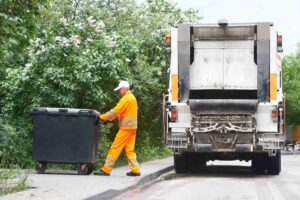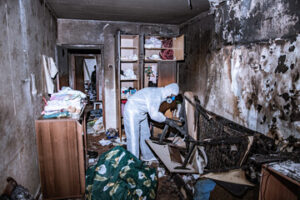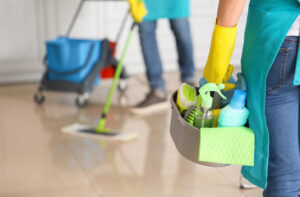Whether you’re dealing with old furniture, appliances, or piles of yard waste, junk removal can help. Some items require special processing or hazardous waste disposal; others may be too heavy to lift.
Junk removal services often recycle or donate items, so as little waste as possible is in the local landfill. Some will even handle hazardous materials, such as e-waste and chemical hazards. You can Visit Website of the junk removal services.

Over time, homes tend to accumulate unwanted items, broken furniture, and miscellaneous debris. These accumulations can cause cluttered living spaces that make it difficult to navigate. Junk removal services are a great way to reclaim wasted space in a home, allowing people to utilize it for daily living or future home improvement projects.
Cluttered environments are also a safety hazard. Piles of junk can create fire hazards tripping hazards, and hinder a person’s ability to maneuver in a room or outdoor space. Junk removal professionals can eliminate these hazards by disposing of unwanted items safely and efficiently.
Professional Junk Removal companies are committed to reducing their environmental impact. They recycle and donate items that can be reused, thereby minimizing waste in landfills. This reduces the need for new landfills, which are damaging to the environment. It also helps to keep harmful materials out of the environment, which can be hazardous to human health.
Another benefit of Junk Removal is that it can save significant money for homeowners and businesses. Cleaning up a property takes a lot of time and effort, and hiring additional workers to assist with the process can be expensive. Junk removal is a much faster and easier way to clean up, saving a business or individual a lot of money.
A cluttered environment could be more appealing to guests and customers. If a homeowner invites friends over for a dinner party, they may feel embarrassed by the mess in their home. This is the same for a business that wants to make a good first impression on clients. Junk removal services can clear out a space and make it look more inviting and organized.
Getting rid of junk can be huge, especially for large households or businesses. Trying to do it alone can be daunting and take weeks. Professional junk removal services can get the job done in a matter of days, allowing a homeowner or business to return to their normal routine quickly.
Junk removal companies are often environmentally conscious, striving to donate and recycle as much of the junk they collect as possible. The items that cannot be donated or recycled will be taken to the appropriate locations for disposal, reducing the need for repeated trips in cars that burn gas and produce emissions. Many junk removal services offer environmentally friendly recycling options, such as taking electronics to be processed in an eco-friendly way and donating used furniture.
In addition to recycling, junk removal companies can often clear out entire homes, which can be time-consuming and physically taxing. This service is often necessary after death, for instance, when family members must sort through the belongings of a loved one to prepare the home for sale. Junk removal services can also help clean a property after a fire, flood, or other natural disaster.
Depending on the size of the job and location, junk removal can be relatively inexpensive. The price is usually based on the volume of junk removed and the type of materials that must be hauled away, such as wood, metal, or electronics. The best junk removal services will provide a quote for the job before beginning. For large jobs, such as a whole house cleanout, the company may offer a discount for multiple trucks or a flat rate for everything being removed.
While some homeowners opt to take their junk to the dump, this can be time-consuming and labor-intensive. In addition, some items, such as e-waste or hazardous materials, may not be able to be transported to the landfill. A professional junk removal service can save homeowners a lot of time and effort and keep them from putting their health at risk by lifting heavy items up or down the stairs.
Junk removal services can remove just about anything except feces or animal carcasses. These items must be removed by a specialized crime scene cleanup crew, which is something other than junk removal companies are qualified to do. However, most companies will remove mattresses, sofas, appliances, yard debris, construction waste, scrap metals, carpets, and rugs.
Many people feel overwhelmed by their clutter and can’t manage to clear it on their own. Junk removal services offer an easy solution by removing the burden from homeowners and businesses. These companies charge a fee to haul away unwanted items and deposit them at an environmentally safe facility. They can also handle delicate situations, like clearing out a deceased family member’s home or helping a hoarder clean up their living space.
Most junk removal companies base their prices on how much space the items will take up in their truck. They often need to see the junk in person before quoting a price. They may also require a minimum price for large furniture or appliances.
If you need help determining which junk removal service to hire, ask friends and neighbors for recommendations or search online for local options. Doing your research can help you find an affordable, licensed, and insured company. When comparing quotes, consider whether additional fees, such as fuel, labor, or disposal costs, may be charged. You can also reduce the cost by preparing your junk for pickup. For example, grouping items and disassembling large furniture pieces can save space.
Junk removal services typically recycle as much of your junk as possible, which helps to reduce the amount of waste that ends up in landfills. Some junk removal companies will donate usable items to organizations that furnish living spaces for those in need. This is an excellent way to keep items out of the trash and provide service to those in need.
However, there are some things that junk removal companies cannot haul away. For example, they will not take hazardous materials like batteries and chemicals. These items can be dangerous to work with and require special training and safety equipment. Likewise, they will not haul away biohazards, such as blood and feces.
When choosing a junk removal company, ensure they are licensed and insured. It is also good to ask for references from previous clients.
There are several ways that homeowners can rid their homes of unwanted items. Some people choose to have a garage sale or donate items to charity. Others may toss things in the trash. However, a lot of junk is too large to fit into the garbage can, and many municipalities have restrictions on what can be thrown away in the trash. Additionally, some items like paint and chemicals require special processing before being disposed of in the landfill.
Junk removal companies can help with these issues by hauling away large items and disposing of them appropriately. This is a much safer and more efficient option for eliminating a lot of junk. These services also often have access to specialized equipment such as wheelbarrows, dollies, and carts that can make the job easier. These tools are necessary to haul an old refrigerator or broken cabinet up a set of stairs or across the lawn.
Some junk removal companies are also socially responsible and recycle a portion of their haul. This helps the environment and can save money on disposal costs for the company. In addition, it can help families in need and other local charities. Unlike some junk removal companies that dump everything in the landfill, these companies strive to find a way to recycle as much as possible and only dispose of items when necessary.
Besides junk removal, these companies offer other services, such as property cleanouts and foreclosure. They can also handle construction and landscaping debris. They can even deal with animal waste and hoarding cleanups. Sometimes, these professionals can provide respiratory masks and other protective equipment for these jobs.
If you need to clear out your garage for a big garage sale or are ready to downsize, junk removal is a great option. It’s fast, affordable and eco-friendly. It can also give you back your space to focus on the things that matter most to you. If you’re ready to get started, start comparing quotes now.

